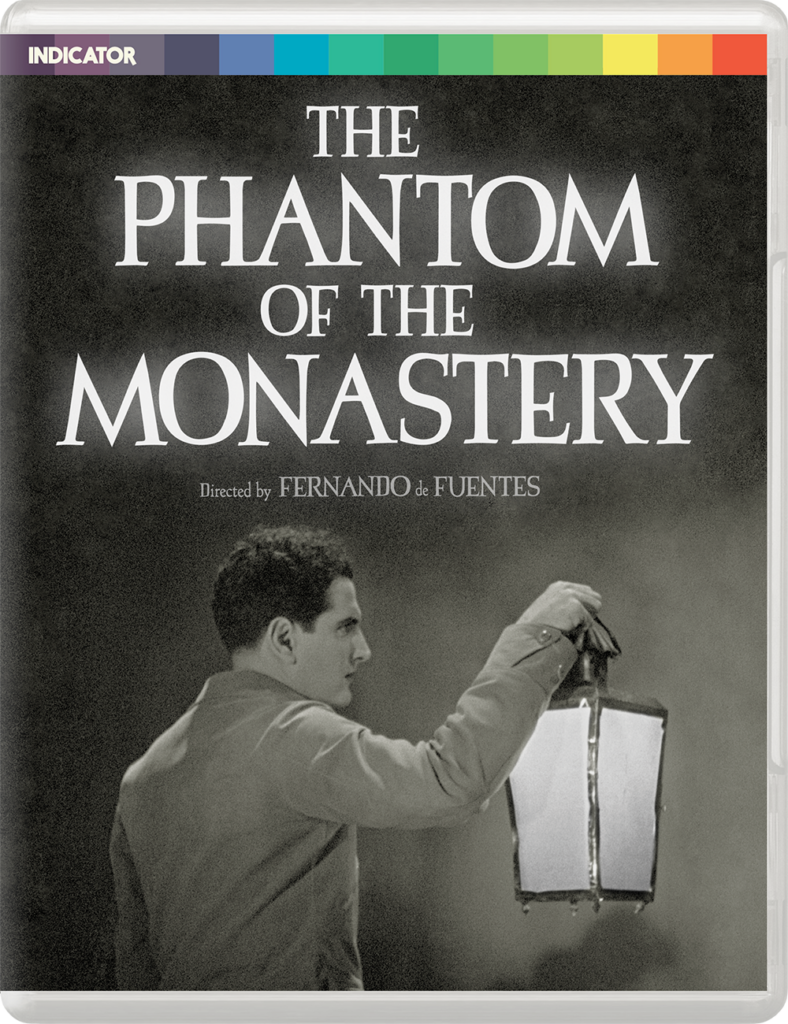Blu-Ray Release of ‘The Phantom of the Monastery’ Offers Chance To Enter World of an Underappreciated Mexican Director
The films of Fernando de Fuentes (1894-1958) are marked by a ‘humanism that spills over borders and eras like a joyful, unruly throng,’ one film scholar writes.

The reputation of director Fernando de Fuentes (1894-1958) hasn’t traveled much outside of his native Mexico, and opportunities to see his films in public forums have been meager. A trio of de Fuentes pictures was screened in Texas by the Austin Film Society, and a broader sampling was recently mounted for the Moralia International Film Festival at Michoacán. Writing for the Criterion Collection, a film scholar, Imogen Sara Smith, posited de Fuentes as the harbinger of the época de oro of Mexican cinema. His films, she wrote, are marked by a “humanism that spills over borders and eras like a joyful, unruly throng.”
Until one of our local cultural institutions sees fit to honor de Fuentes with a retrospective, New Yorkers will have to make due with a new Blu-ray package courtesy of the cineastes across the pond at Powerhouse Films. As part of the Indicator series, it’s releasing a U.S. edition of the rare horror film in de Fuentes’s oeuvre, “The Phantom of the Monastery” (1934). Made in response to the success of “La Llorona” (1933), a picture directed by Ramón Peón and co-scripted by de Fuentes, the story was inspired, in part, by the mummies on display at Mexico City’s Museo de El Carmen.
Here’s a thought: Are the desiccated mummies we glimpse toward the end of “The Phantom of the Monastery” cunning approximations or the real things? De Fuentes and crew filmed on the grounds of a Tepotzotlán monastery and you’d best believe these locations amplify the movie’s spookier tangents. The title edifice is seen here as an oppressive agglomeration of windowless rooms and veering passageways, a disabused bunker as imagined by M.C. Escher. Cinematographer Ross Fisher didn’t miss a dust-laden detail or glittering cobweb even as he made sure the surrounding environs were dark as sin.
Sin most definitely enters into the proceedings. Not a few minutes into the movie, we can already intuit that our three leads are in a romantic conundrum. Eduardo (Carlos Villatoro) and his wife Cristina (Marta Roel) have been walking out in the woods with Eduardo’s best friend, Alfonso (Enrique del Campo). The three are smartly attired, young, and, it seems, wealthy — urbanites getting their fill of the great outdoors. Alas, they turn out to be too urban for their own good and lose sight of the pathway. Edouardo falls into a ditch and is barely able to scrabble his way out. Cristina, who has her wiles set on Alfonso, doesn’t seem to mind.

Hearing tell of a nearby monastery — surely, the place must long be abandoned, religion being an antiquated pursuit and all — they debate on whether to search it out as a means of shelter. Whereupon they are met by a towering, glowering stranger and his dog, the appropriately named Shadow. These two escort our city slickers to the monastery, the tenants of which are the Order of the Brothers of Silence. These are old men, clad in thick, weighted robes and possessed of otherworldly gravitas. A sign hangs above the door: “Cursed be who turns to flesh and forgets God.” Our heroes enter all the same.
“The Phantom of the Monastery” is an allegory about the limitations of hubris and the persistence of guilt, or, if you’d like, a ghost story freighted by Catholicism. The inherent callowness of our leads increases exponentially as the Father Superior (Paco Martinez) is ever prone to riddling and obfuscation. Food turns to ashes, flesh turns to bone, and the consummation of lust seems unavoidable.
Quibble all you want about this being corny, sexist, and slow-as-molasses, but here is a movie in which “there is something strange but very human going on here.” Rarely has sunshine felt as welcome as it does after an evening spent with the Brothers of Silence. Here is a staple of the genre.

